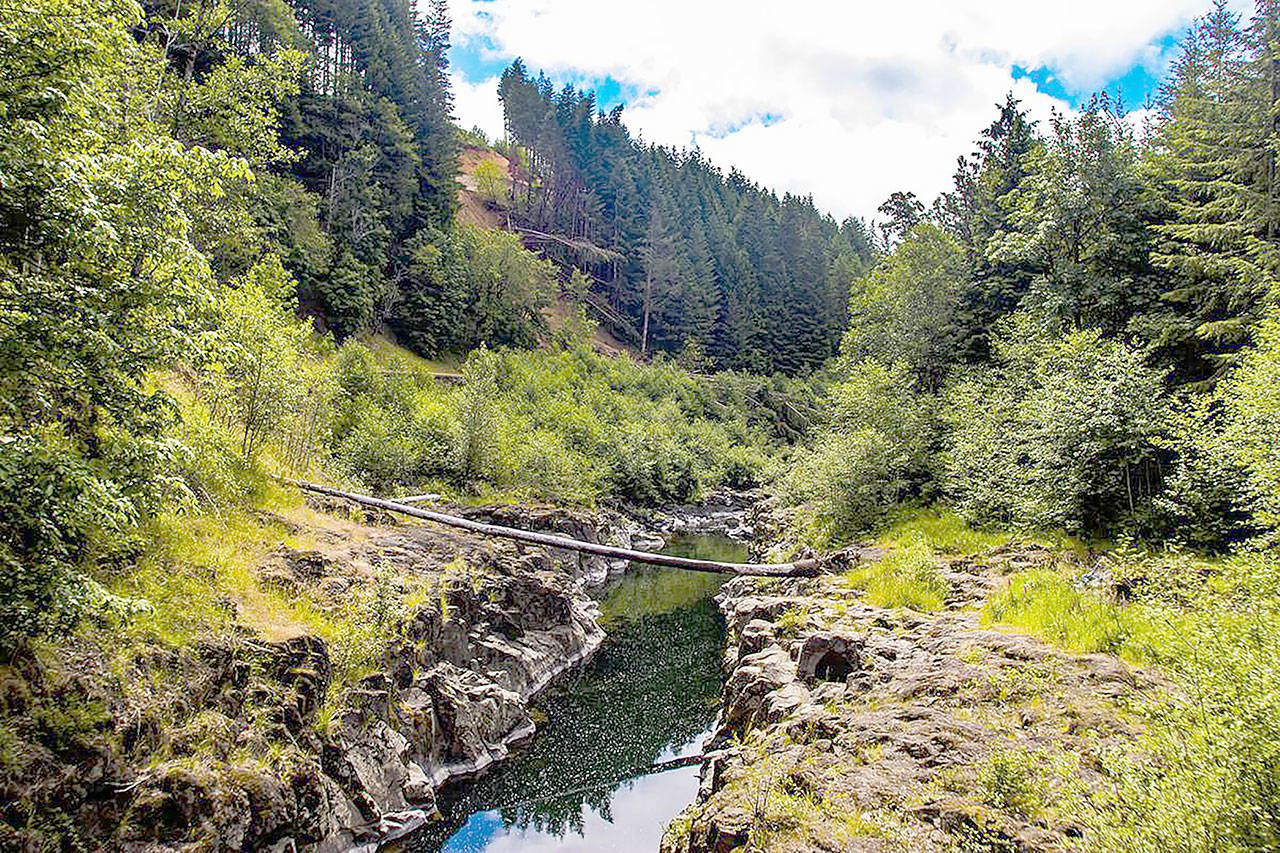By Alex Brown
The Chronicle
The U.S. Army Corps of Engineers is set this week to begin exploring alternative options to the proposed dam on the Chehalis River, the latest step in the environmental review for the project that’s been in the works for years.
Monday, the Chehalis River Basin Flood Control Zone District voted to adopt an amended Purpose and Need Statement with a few language changes suggested by the Corps, that will allow the agency to continue its review.
“For the Corps to proceed on alternatives is a very good sign,” said Jim Waldo, a government affairs consultant that is advising the district on the year-long environmental review. “That’s what starts their engine really turning.”
Both the Corps and the Washington State Department of Ecology are conducting extensive environmental reviews of the proposal, which would cost hundreds of millions of dollars and is designed to alleviate flooding that has devastated the region in the past. The process began with a joint scoping effort last fall, after which the state and federal agencies started independent studies.
According to Waldo, the state has begun work on its review, while the feds are working to get up to “full bore” on theirs. The vote Monday by the district will allow them to continue that momentum.
The original Purpose and Need Statement submitted by the district outlined all the areas that would be helped by the dam, which would let the river run normally under most conditions and raise gates to create a temporary reservoir during severe flooding. It’s designed to lessen flooding from the proposed dam location in Pe Ell all the way downstream to Grand Mound.
According to the Corps, though, project backers could improve their chances by narrowing the “target area” in that statement, the location where the dam will have the greatest effect. That’s because the agency’s review needs to look at alternatives that could accomplish those same goals. If the goals are too wide-ranging, there are no alternatives that could accomplish all those ends — which makes the district vulnerable to a legal challenge.
“If we get this thing so tight that we can’t even look at alternatives, then it’s a foregone conclusion that it will be challenged, and we’ll definitely lose,” said district administrator Erik Martin. “We would probably exclude most other alternatives (with the current target area). … That’s bad, because of the legal defensibility. The judge would say, ‘You haven’t looked at enough alternatives. Go back and try again.’ Then three years of work is lost, and we start over.”
The question of which alternatives were explored is certainly one that would be asked in court, Waldo said, and the district would have a flimsy case if it had written the project scope so extensively as to disqualify other options.
“We want to make sure (the Corps), and therefore we, can withstand the test of that challenge — ‘Did they look at enough alternatives?’” he said. “It’s not proposing we change the project or who it would benefit, but where would that intense analysis be done.”
With that in mind, the Corps’ revised statement focused on Centralia, Chehalis and the I-5 corridor, the areas that sustained the most economic damage during the 2007 flood. Their changes left out West Lewis County, including Doty, Dryad and Pe Ell.
District supervisors were disappointed that those areas had been excluded, but relieved that the wording won’t affect that actual design of the project to help with flooding there.
“I’m always worried about message,” said supervisor Gary Stamper. “(The flood) also affected the folks upriver, and that’s where the dam’s going to be. … Coming from an area (on the Cowlitz River) where they built a dam, they didn’t really care about the area they impacted the most.”
While accepting the changes as a necessary technicality to improve the project’s odds, the district also added language into the document noting that the benefits outside of the designated “target area” are still important.
“We recognize that there will be project benefits upstream and even some downstream of this targeted area, and those are very important to us,” said district staffer Betsy Dillin.
Added Martin: “We’re basically saying don’t forget about Doty, Dryad and Pe Ell, and every place in between.”
With the district’s sign-off on the revised statement, the Corps is expected to begin work on alternatives Tuesday. As that ramps up, they’ll be asking the district for funding to add another full-time staffer to help expedite the review — money the district has already budgeted.
Meanwhile, Waldo said a recent meeting with the Chehalis and Quinault Tribes, both members of the Chehalis Basin Board, had been productive and informative.


